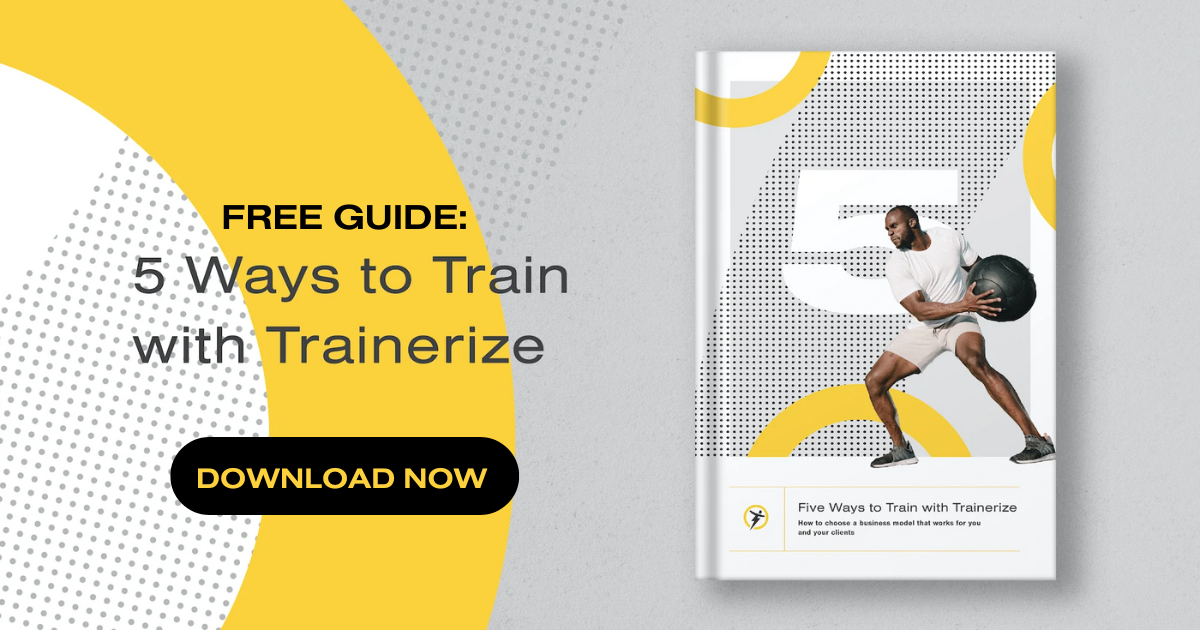If you’re an expert in the fitness, health or nutrition industry, then creating an online course is a great way to share your knowledge with the world (and a great source of income too). Still, creating an engaging course is only half the battle – it’s also important to know how to sell it! In this article, we’ll give you detailed tips on how to sell online courses successfully so you can grow your fitness, health or nutrition business this year.
Let’s dive in!
Know your audience
Knowing your audience is key to creating and selling online courses that resonate with potential purchasers. To better understand your audience, consider these five tips:
1. Identify your niche
As you know, the fitness, health, and wellness space is broad and there are many sub-niches to choose from. By taking the time to define and identify your specific niche, you’ll have a much better understanding of your audience’s needs to be able to deliver them the content they want to purchase.
2. Research your target market
Once you’ve identified your niche, it’s important to research your target market to understand their motivations, pain points, and goals. For example, if you’re creating a yoga course, your target market might include people looking to improve flexibility, reduce stress, or manage chronic pain. Use surveys, interviews, and social media analytics to gather information about your audience to understand what courses would serve them best.
3. Use Empathy to Understand Your Audience
In order to create a successful online course that resonates with potential purchasers, it’s important to empathize with your audience and understand their challenges and aspirations. A great way to do this is to put yourself in your audience’s shoes and consider the obstacles they may face when it comes to achieving their long-term health and wellness goals.
🔗 Learn to maximize the profitability of your clients
with a Client Retention Strategy!
4. Consider different learning styles
People learn differently, so it’s important to consider different learning styles when creating your online course. For example, some people prefer video-based lessons, while others prefer written materials or audio recordings. By understanding the learning preferences of your audience, you can create a course that is engaging, effective and sells.
5. Address common concerns and misconceptions
In the fitness, health, and wellness space, there are often common concerns and misconceptions that people have. For example, people may be worried about getting injured during exercise or may have misconceptions about the benefits of certain types of workouts. By addressing these concerns and misconceptions in your course, you can help alleviate fears and build trust with your audience.
Finally, by truly knowing and understanding your audience, you can create a course that is tailored to their needs and preferences. Use these tips to gather information about your audience and empathize with their challenges and aspirations. This will help you create a course that is engaging, effective, and valuable to your target market.
Choose the right platform
Once you know your audience, it’s important to decide what platform you’ll use to deliver your course content. But before you start looking at different platforms, it’s important to understand your needs. For example, what features do you need? Do you need the ability to customize your course? Do you need marketing tools? Start by making a list so you can narrow down your options. Here are 7 things you’ll want to consider:
1. Your budget
Different platforms have different pricing models, so it’s important to consider your budget when choosing a platform. For example, Trainerize has different pricing plans based on the number of clients you have. Consider what you’re willing to spend and compare different platforms to find the one that fits your budget.
2. The platform’s features
Different platforms offer different features, so it’s important to consider what you need for your online course. For example, Trainerize offers features like workout and nutrition plans, progress tracking, and messaging with clients. Make a list of the features you need and compare different platforms to find the one that offers the most value for your needs.
3. Ease of use
The platform you choose should be easy to use for both you and your clients. Look for a platform that offers a mobile app for clients to access their workouts and communicate with you. And be sure to consider user experience and how easy it will be for your clients to navigate and use the platform.
4. Marketing and sales tools
Marketing and sales tools are integral to selling your online course. So look for a platform that offers features like customizable landing pages, email marketing, and integrations with social media platforms.
5. Integrations
Integrations can help streamline your business processes and save time. For example, Trainerize integrates with other apps and tools such as MyFitnessPal and Zapier. Check for integrations with other tools you use or plan to use in your business.
6. Research Support and Resources
Finally, research the support and resources available on the platform. Consider the level of support and resources you need and choose a platform that offers them.
By considering your needs, budget, features, ease of use, marketing and sales tools, integrations, and support and resources, you can choose the right platform to sell your online courses. Trainerize is a popular option with many features and integrations, but be sure to compare different platforms to find the one that is best for your business
Price your course appropriately
Pricing your online course appropriately can be a challenge, especially in the competitive fitness space. Here are some tips for pricing your course in a way that reflects its value and meets the needs of your audience:
1. Research Your Competition
Researching your competition can give you a good idea of what price point is appropriate for your online course. Look at similar courses in the fitness space and compare their pricing, features, and benefits. Remember to consider what sets your course apart and what value it offers that competitors do not.
2. Consider your costs
Before setting a price for your course, it’s important to consider your costs. This includes the cost of creating the course, including software, equipment, and outsourcing. You’ll also need to consider ongoing costs like marketing and platform fees. Calculate your costs and set a price that reflects your investment and desired profit margin.
3. Understand your audience’s budget
It’s important to think about your target audience’s budget when pricing your online course. People have varying budgets and priorities, so it’s important to find a price point that’s accessible to your target market. Consider offering different pricing tiers or payment plans to accommodate different budgets.
4. Highlight the Value of Your Course
When pricing your course, it’s important to highlight the value it offers. Focus on the benefits and outcomes your audience can expect from taking your course, such as improved fitness, better health, and increased confidence. Think about offering bonuses or incentives that add even more value to your course.
5. Test Your Price
Finally, test different price points to see what resonates with your audience. You can do this by offering early bird pricing, discounts, or limited-time promotions to see what drives sales. Be sure to monitor your conversion rates and adjust your pricing as needed to find the sweet spot that balances value and affordability.
Lastly, by researching your competition, considering your costs, understanding your audience’s budget, highlighting the value of your course, and testing different price points, you can price your online course appropriately. Remember, pricing is not a one-time decision – it’s a continuous process of monitoring and adjusting to meet the needs of your audience and reflect the value of your course.
Create a compelling sales page
Creating a compelling sales page is key to driving sales. Here are 5 tips for creating a sales page that converts:
1. Create a compelling headline
Your headline is the first thing people see when they land on your sales page. Make sure it’s compelling and speaks directly to your target audience. Use clear, concise language and focus on the benefits of your course.
2. Highlight the benefits
Speaking of benefits, make sure to highlight them prominently on your sales page. Focus on what your course can do for your audience. For example, improving their fitness, boosting their confidence, or helping them reach their goals.
3. Include Social Proof
Social proof, like customer testimonials, can be a powerful motivator for potential buyers. SO be sure to Include testimonials from happy clients who have taken your course and seen results. Consider including video testimonials for added impact.
4. Use Visuals
Visuals can help break up text and make your sales page more engaging. Use high-quality images and videos that showcase your course and highlight its benefits. Consider including before-and-after photos of people who have taken your course and seen results.
5. Create Urgency
Creating a sense of urgency can encourage potential buyers to take action. Use limited-time promotions, likes early bird pricing or discounts for the first 100 buyers, to create urgency and drive sales.
By creating a compelling sales page that highlights the benefits of your course, using social proof and visuals, and creating urgency, you can drive sales and grow your online course.
5. Promote your course
Promoting and marketing your course is a non negotiable when it comes to your course’s success. Be sure to consider:
1. Promoting your course on social media
Social media is a great way to promote your online course to a wider audience. Use platforms like Instagram, Facebook, and Twitter to share updates about your course, post testimonials, and offer special promotions.
2. Collaborating with Influencers
Collaborating with influencers can help you reach a wider audience and build credibility. So be sure to reach out to influencers who align with your brand and offer them a free copy of your course in exchange for a review or shoutout.
3. Offering a Free Preview
Offering a free preview of your course can give potential buyers a taste of what they can expect and encourage them to make a purchase. Consider offering a free module or demo video that showcases the benefits of your course.
Finally, using social proof and visuals, creating urgency, promoting your course on social media, collaborating with influencers, and offering a free preview can help drive sales and grow your online course in the fitness space. But remember, building a successful online course takes time and effort, so stay focused, stay passionate, and keep refining your approach.
Offer a guarantee
Offering a guarantee can be a powerful way to build trust with your potential buyers and encourage them to make a purchase. Here are some tips for offering a guarantee for your online course in the fitness space:
1. Understand Your Audience
Before offering a guarantee, it’s important to understand your audience and what they expect from your course. Consider the goals and expectations of your target market and tailor your guarantee to meet their needs.
2. Define Your Guarantee
Your guarantee should be clear, concise, and easy to understand. Consider offering a money-back guarantee that gives buyers a certain amount of time to try your course and request a refund if they are not satisfied. Be sure to include any terms and conditions,like timeframes or specific requirements for requesting a refund.
3. Highlight the Benefits
Make sure to highlight the benefits of your guarantee on your sales page. Explain how it can help build trust with potential buyers and give them the confidence to make a purchase. Additionally, consider using social proof from satisfied customers who have taken advantage of your guarantee.
4. Monitor and Respond to Feedback
Be prepared to receive feedback from buyers who take advantage of your guarantee. Monitor feedback and respond to it promptly and professionally. Consider using feedback to improve your course and make it even more valuable to your audience.
5. Learn from Your Guarantee
Offering a guarantee can also provide valuable insights into your audience and the effectiveness of your course. Pay attention to the reasons buyers request refunds and use that feedback to improve your course and make it more valuable to your audience.
Finally, by understanding your audience, defining your guarantee, highlighting the benefits, monitoring and responding to feedback, and learning from your guarantee, you can offer a powerful guarantee that builds trust and encourages sales.Keep in mind that offering a guarantee is a commitment to providing value to your audience, so make sure to deliver on that promise and exceed their expectations.
Make ongoing improvements
Continuous improvement is key to building a course that sells. Here are some tips for continuously improving your course:
1. Get feedback
Feedback from your customers can be invaluable in helping you improve your offerings. Consider sending out surveys, hosting focus groups, or simply asking for feedback through email or social media. Use that feedback to identify areas where your course could be improved.
2. Monitor engagement
Keep track of how your customers are engaging with your course. For example, look at completion rates and time spent on each module. Use that data to identify areas where your course may be lacking or where customers may be struggling.
3. Update content
Regularly updating your course with new content and information can help keep it fresh and engaging for your audience. Consider adding new modules, updating existing modules, or adding new resources to help your customers achieve their goals.
4. Experiment with formats
Don’t be afraid to experiment with different formats, like video, audio, or interactive exercises. Different formats can help keep your course engaging and help customers learn in different ways.
5. Keep up with trends
The fitness industry is constantly evolving, so it’s important to keep up with the latest trends and best practices. Attend industry events, follow thought leaders in the fitness space, and stay up-to-date with the latest research to ensure your course is always current.
By getting feedback, monitoring engagement, updating content, experimenting with formats, and keeping up with trends, you can create a course that delivers value to your clients and helps them achieve their fitness goals.
Trainerize offers features like customizable branding, automated billing, and built-in messaging and communication tools, making it easy to manage your course and communicate with your customers. By incorporating Trainerize into your online course, you can sell more effectively and focus on delivering high-quality content to your clients. Download your free 30 day trial to get started today.


